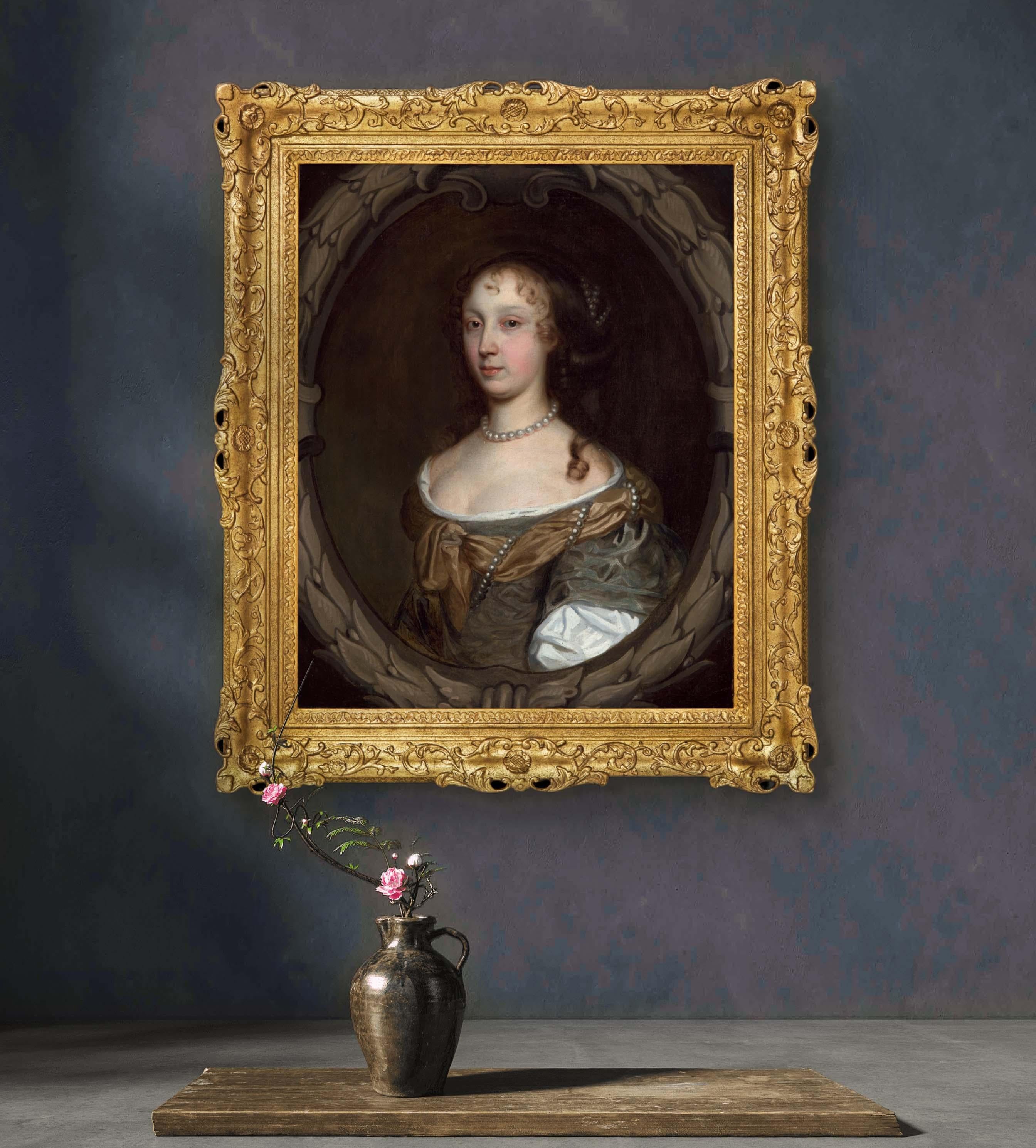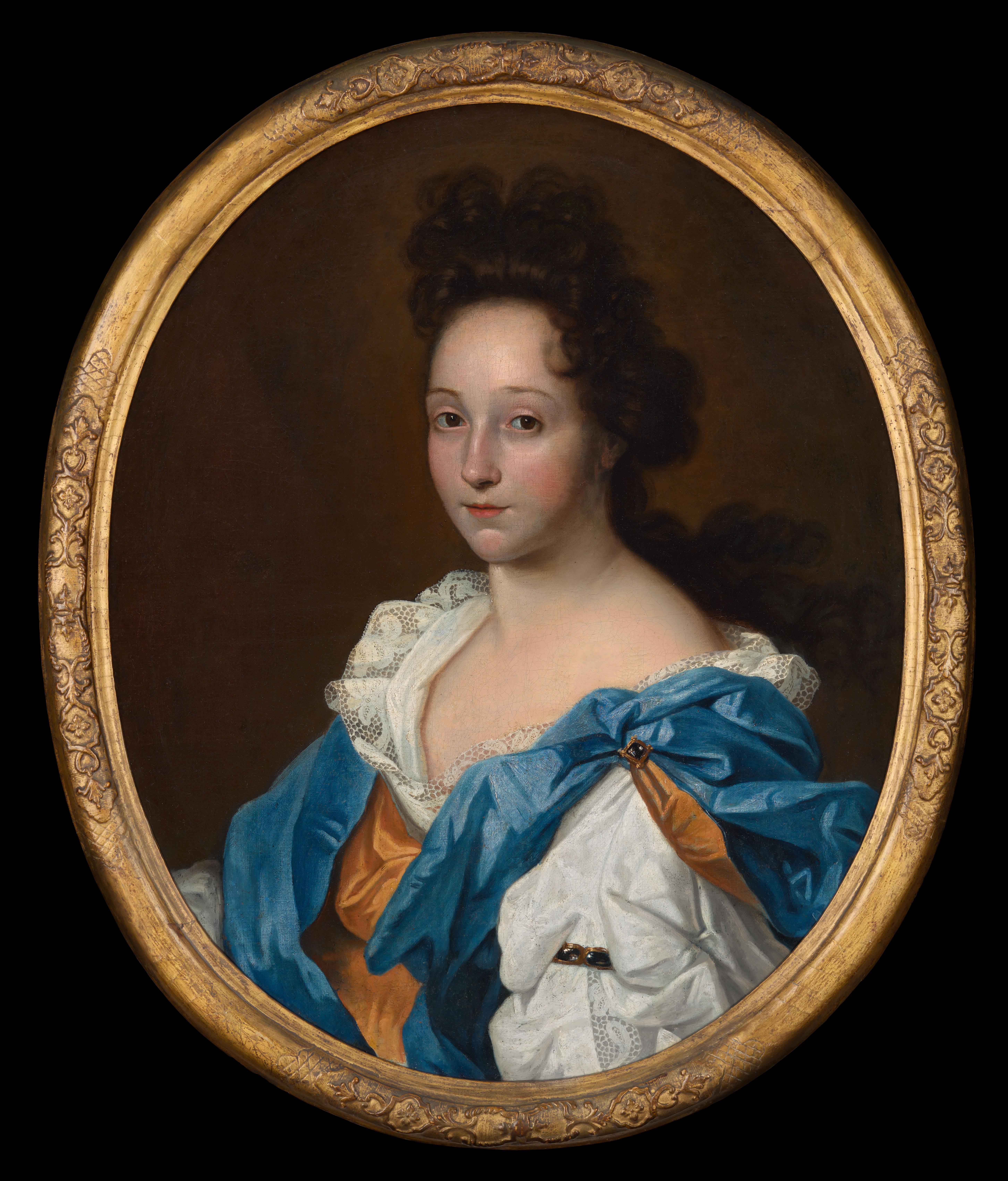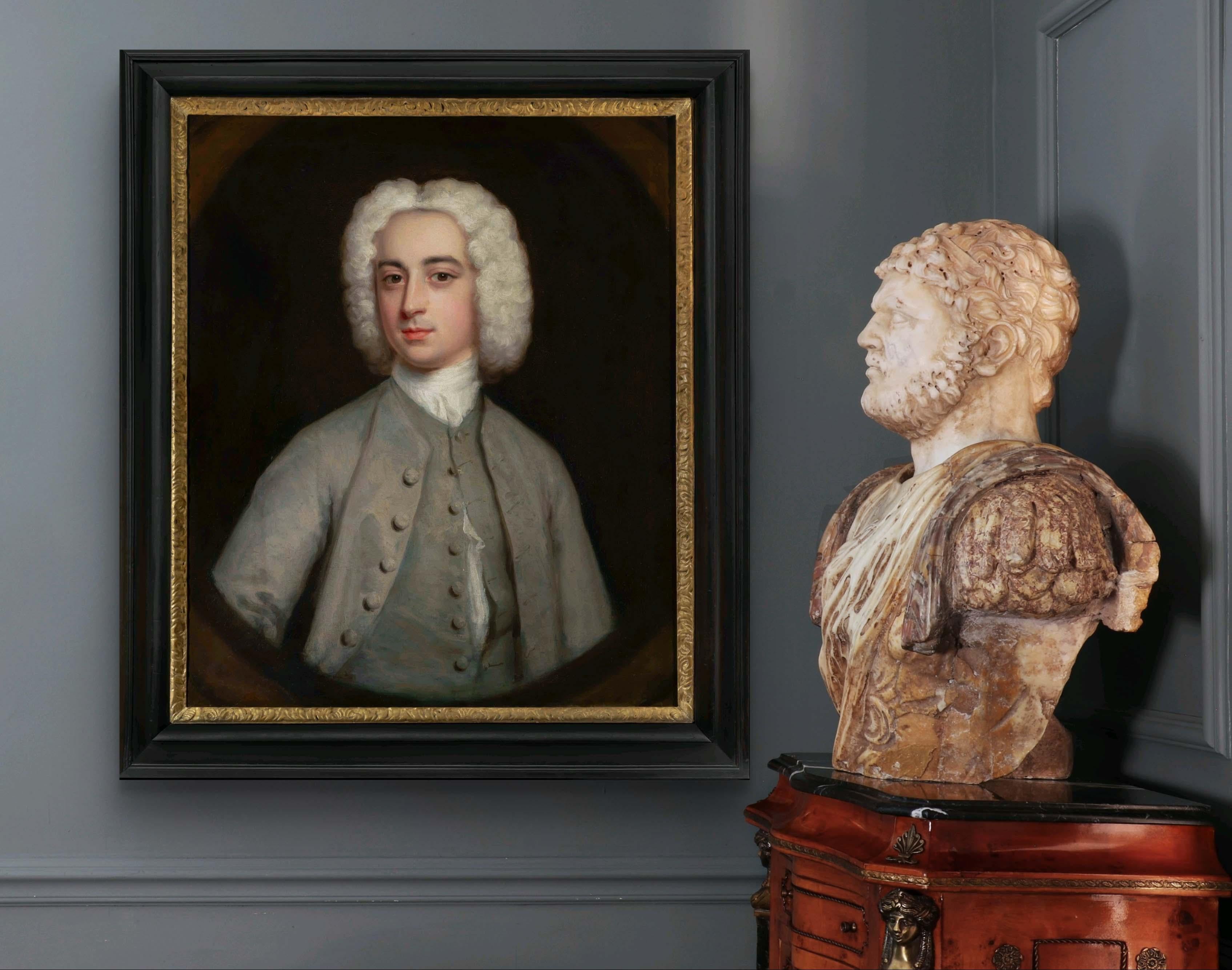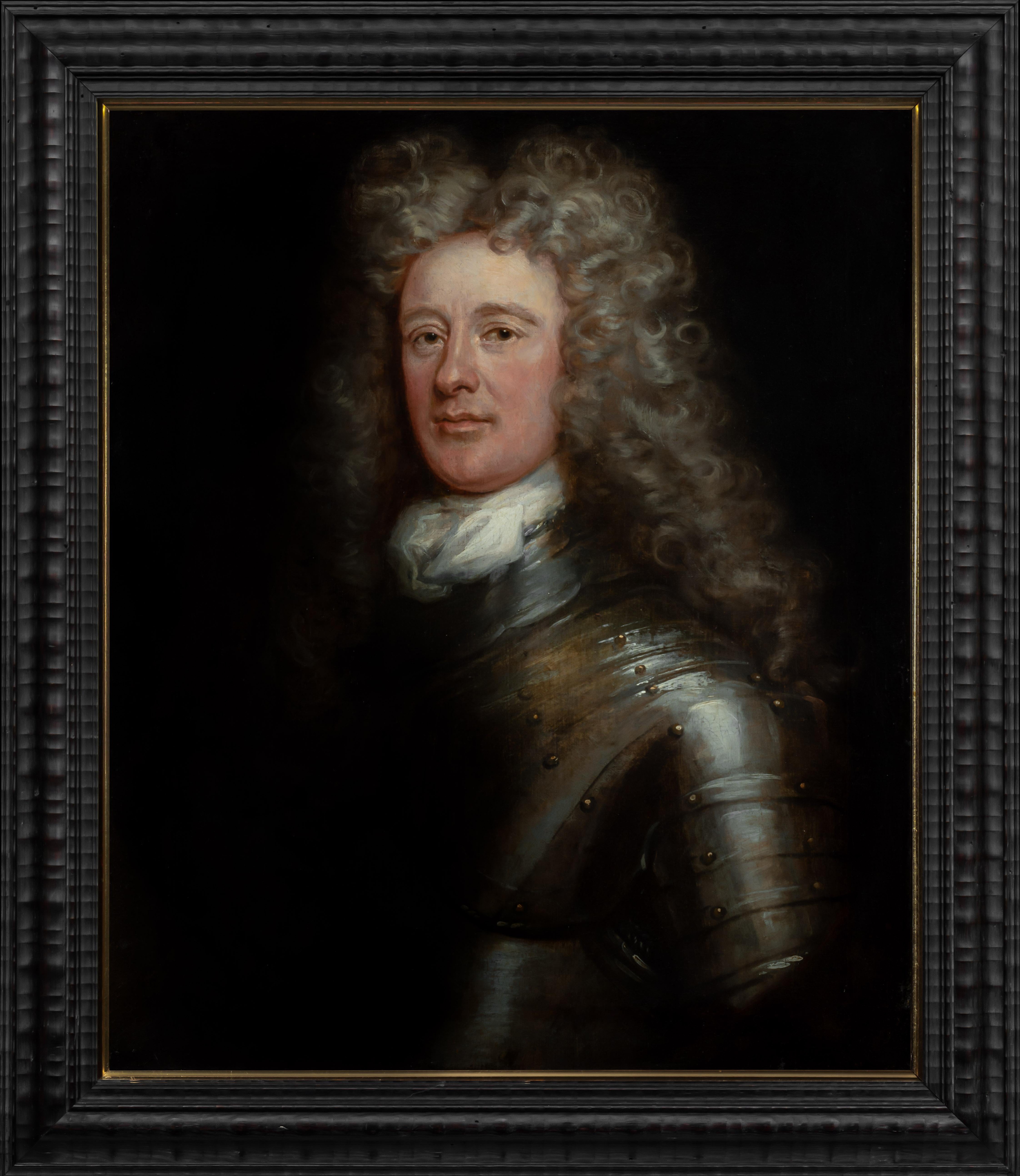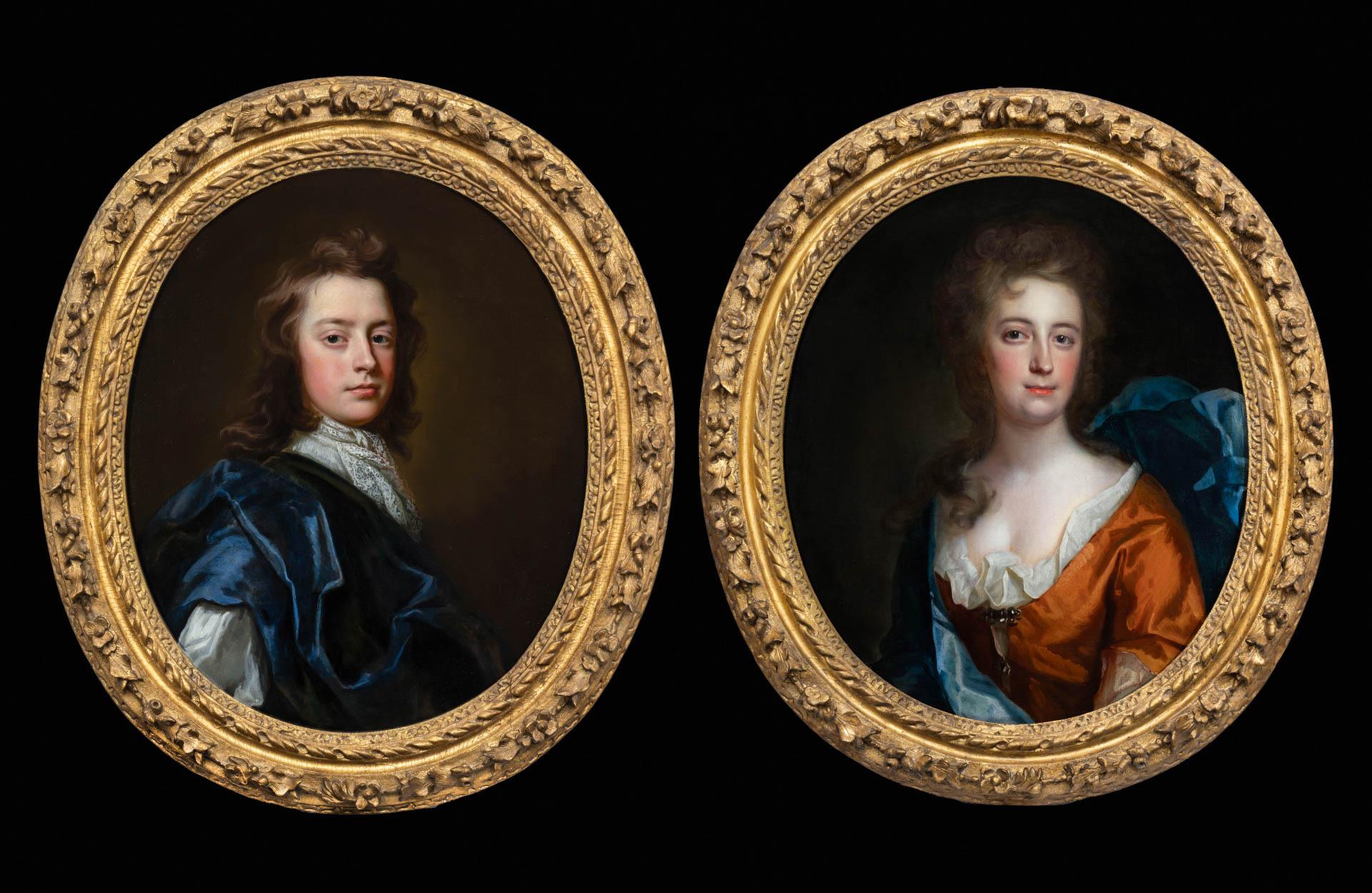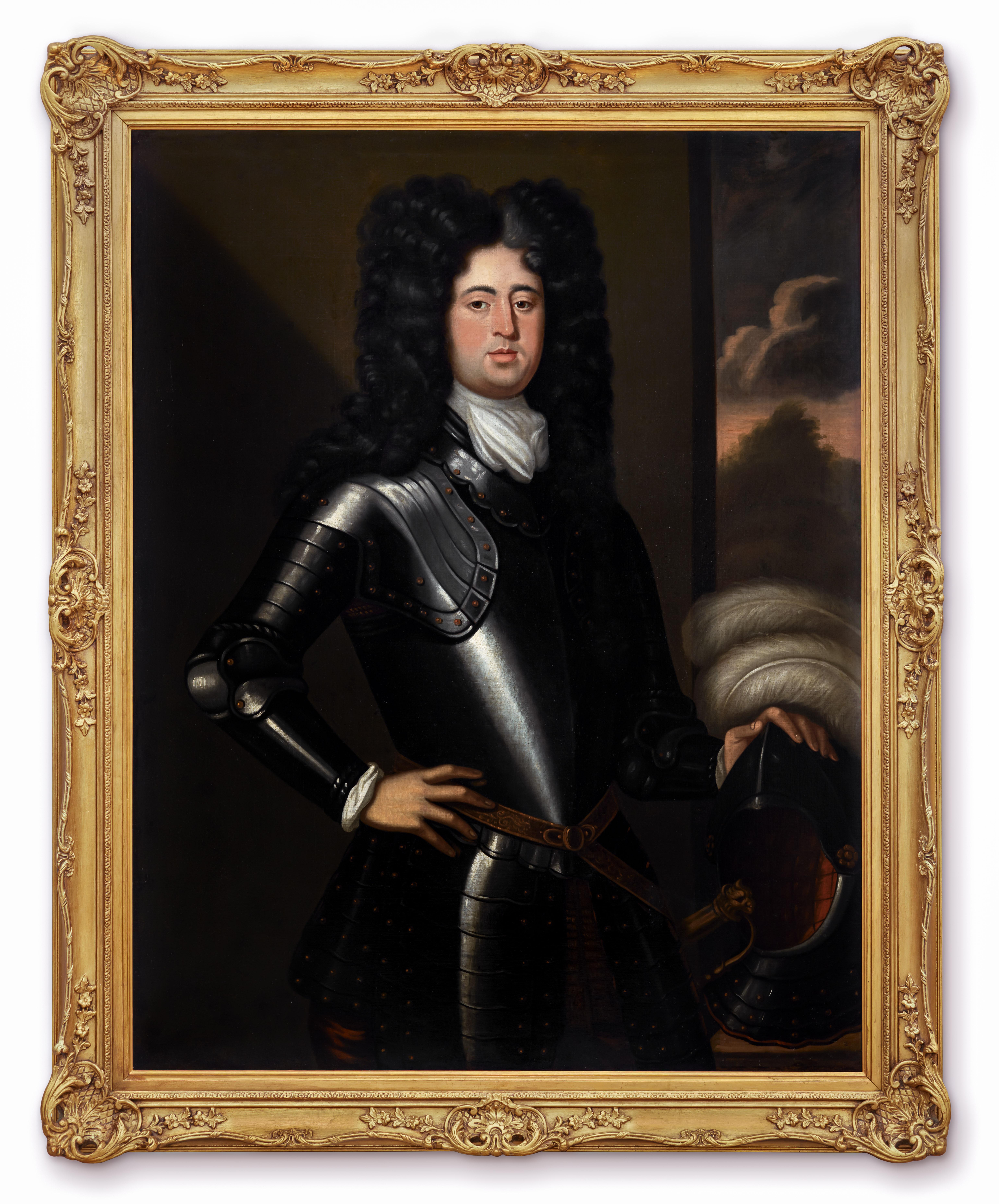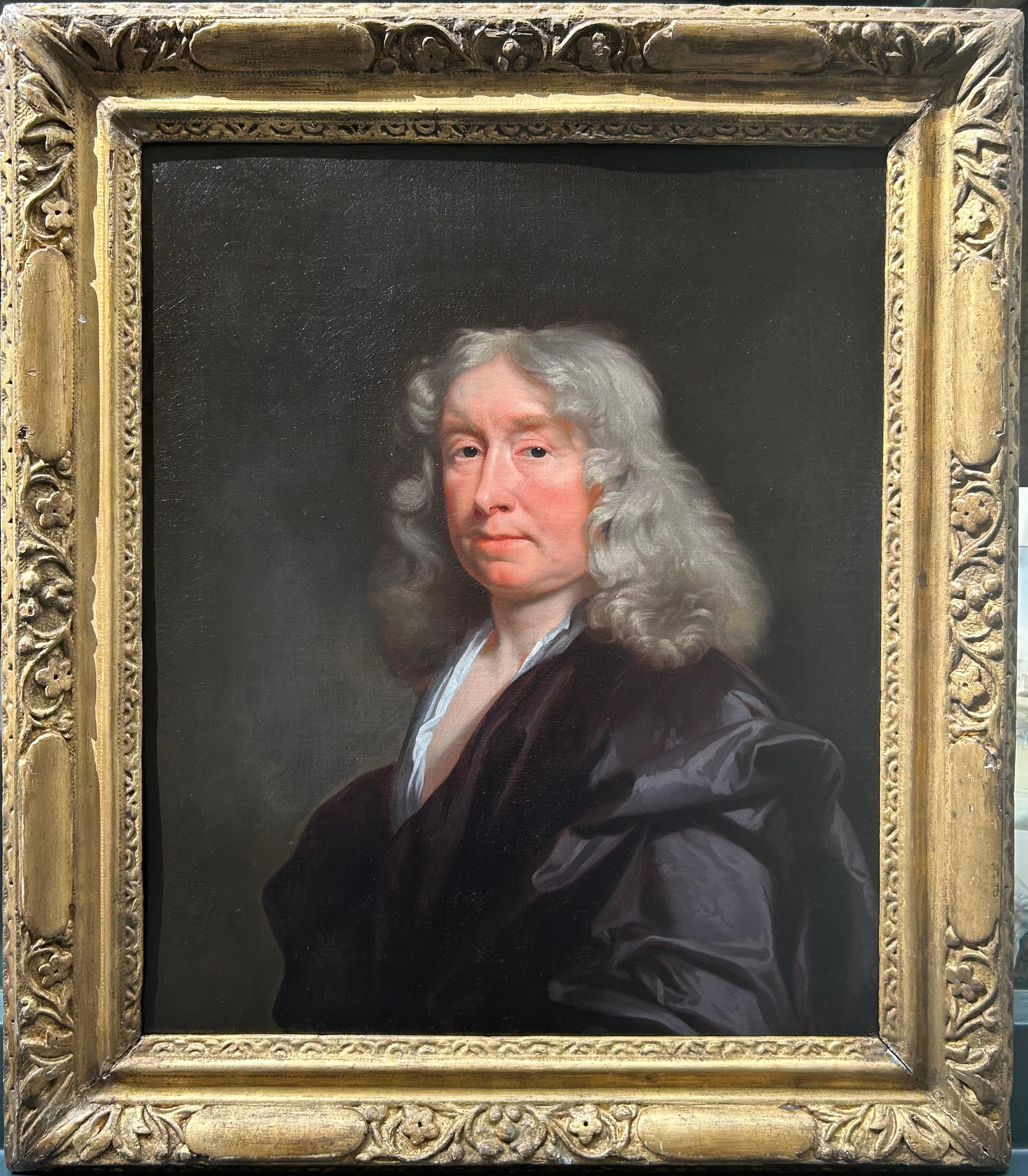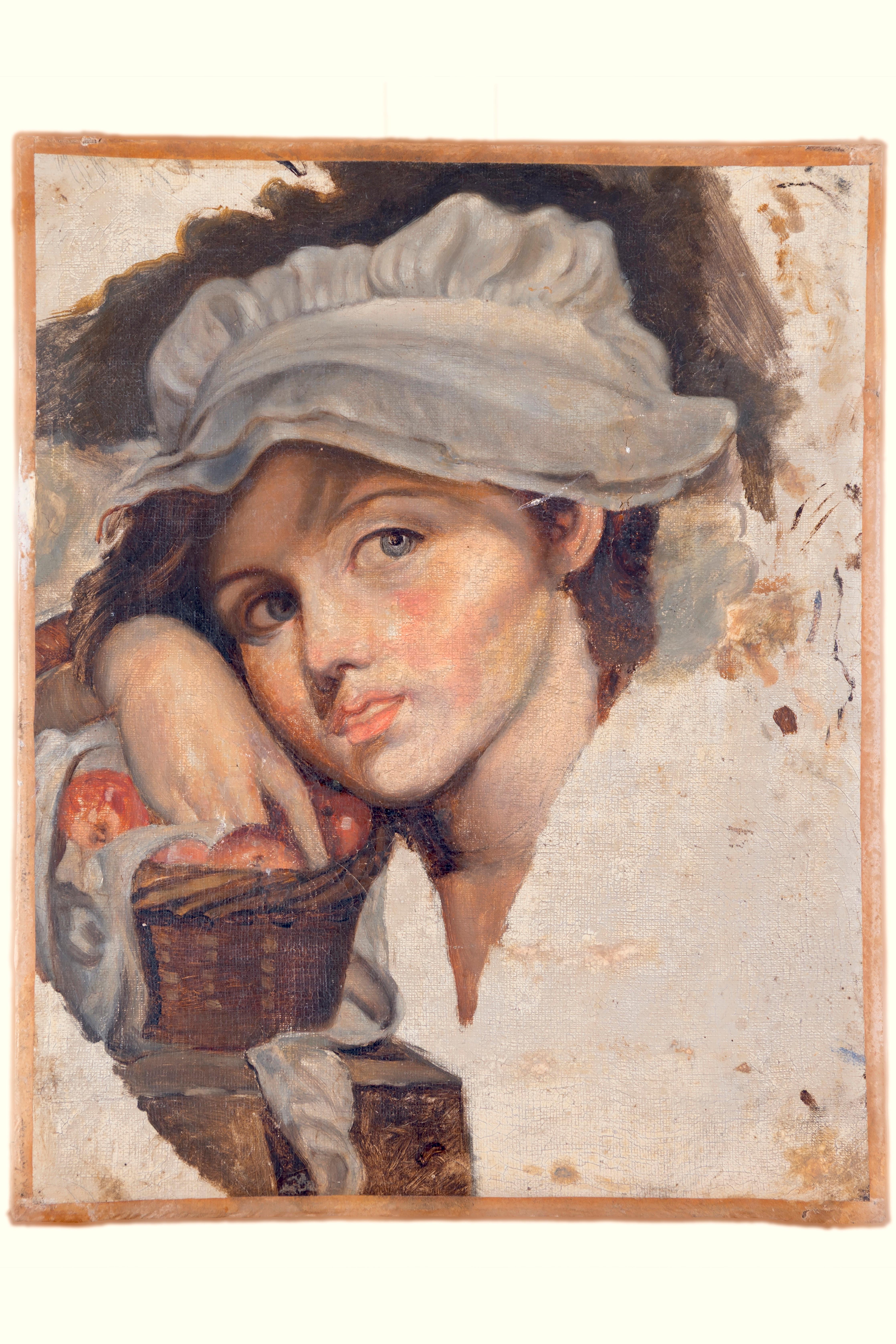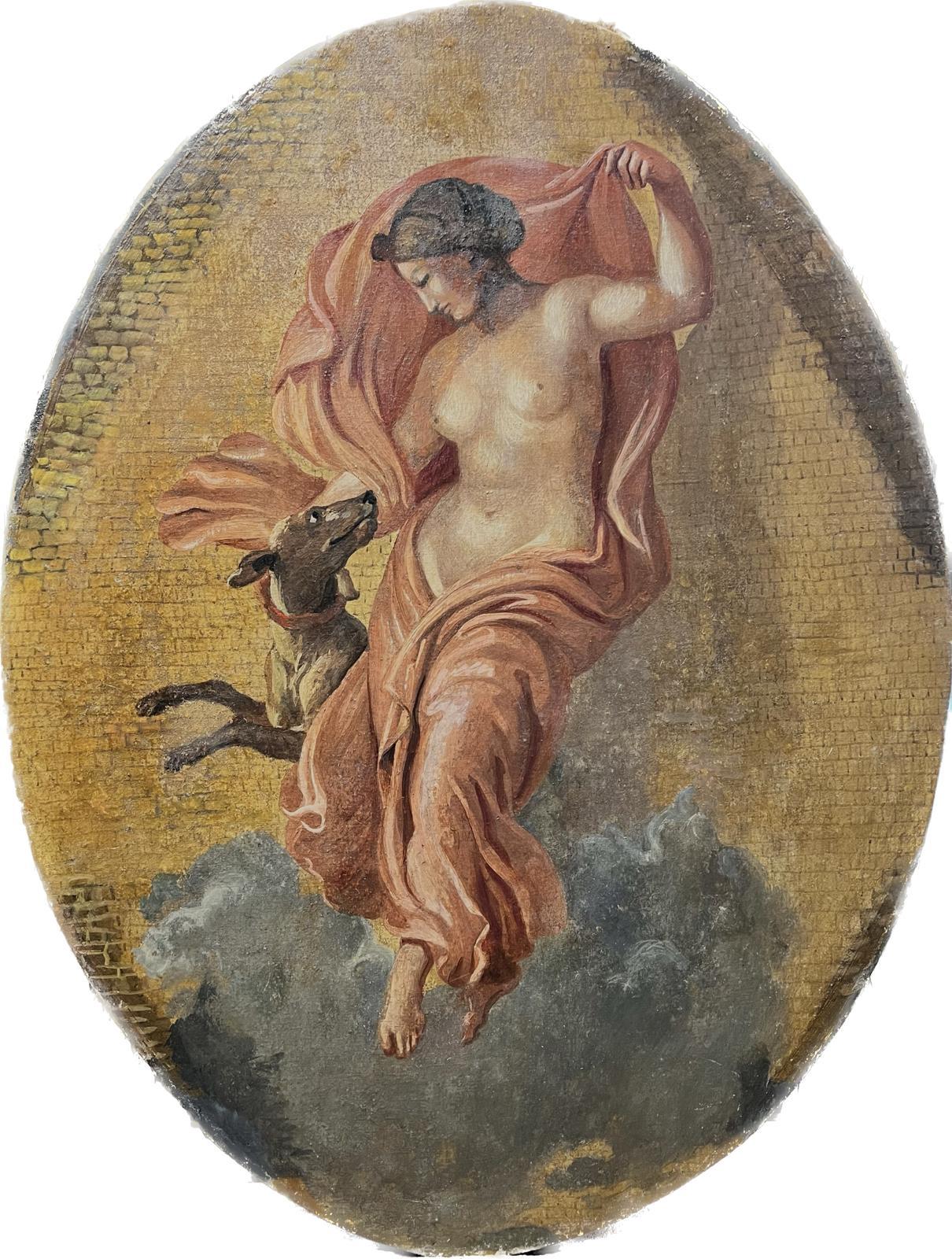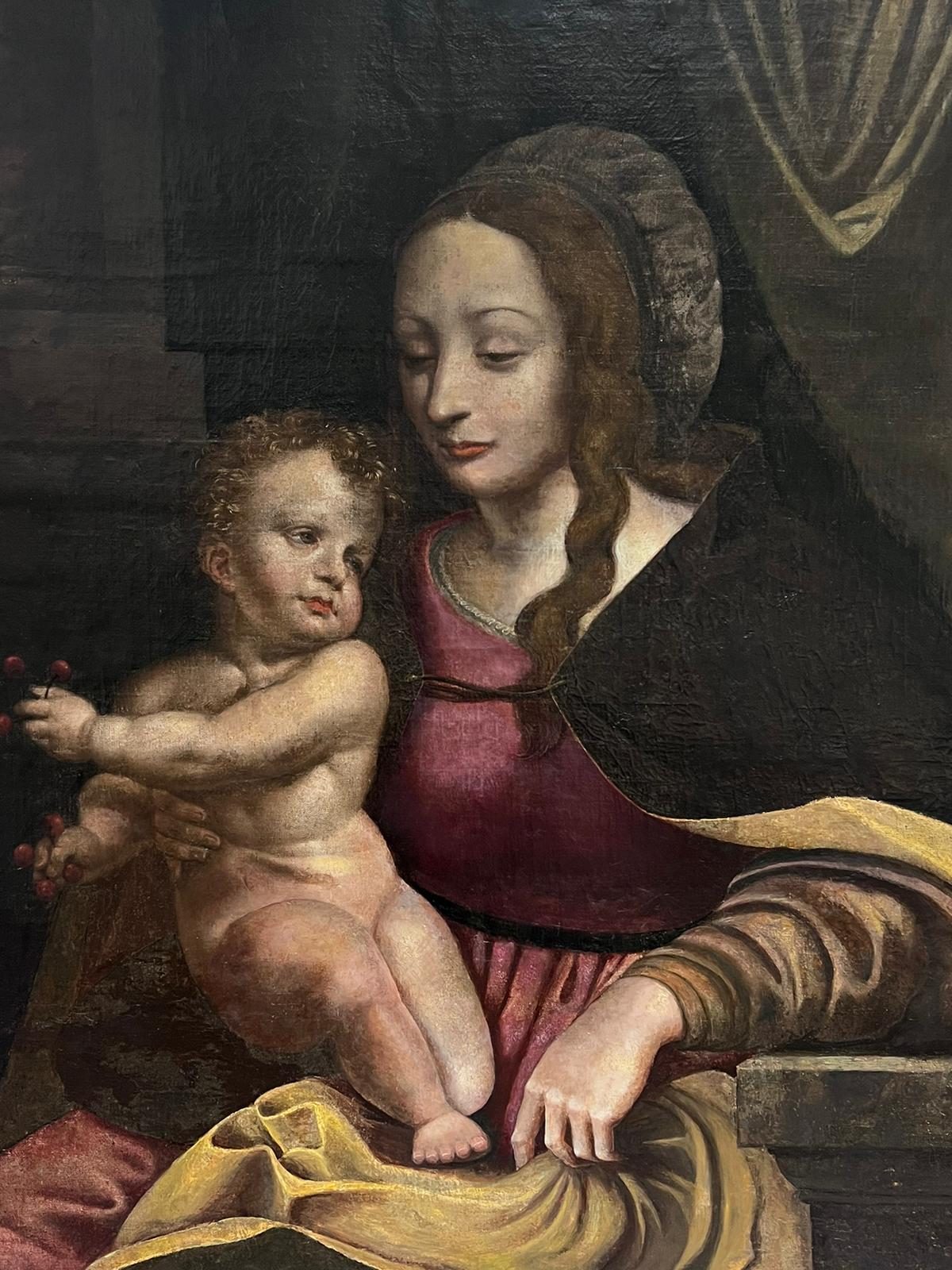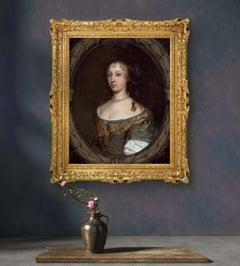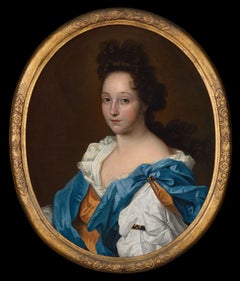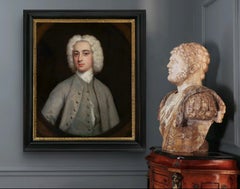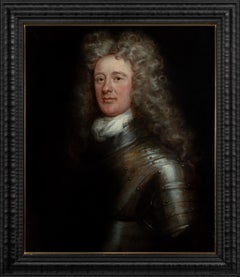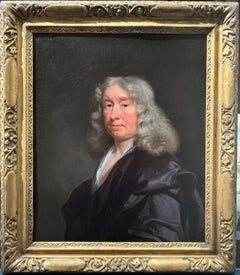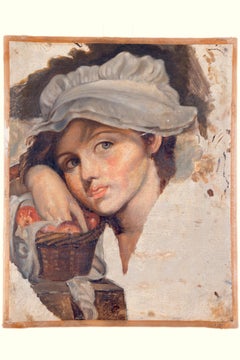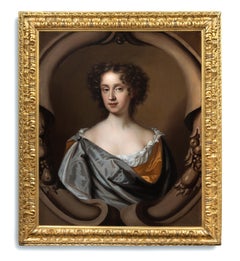
Portrait of a Lady in Silk Dress & Blue wrap in oval, Mary Beale, Oil on canvas
View Similar Items
Want more images or videos?
Request additional images or videos from the seller
1 of 12
Mary BealePortrait of a Lady in Silk Dress & Blue wrap in oval, Mary Beale, Oil on canvas1675-1680
1675-1680
$15,505.86List Price
About the Item
- Creator:Mary Beale (1633 - 1699, English)
- Creation Year:1675-1680
- Dimensions:Height: 35.44 in (90 cm)Width: 30.71 in (78 cm)Depth: 2.37 in (6 cm)
- Medium:
- Movement & Style:
- Period:
- Condition:This painting has passed a strict quality and condition assessment by a professional conservator prior to going on sale.
- Gallery Location:London, GB
- Reference Number:1stDibs: LU1199112586562
About the Seller
5.0
Vetted Professional Seller
Every seller passes strict standards for authenticity and reliability
Established in 1998
1stDibs seller since 2019
44 sales on 1stDibs
Typical response time: 5 hours
Authenticity Guarantee
In the unlikely event there’s an issue with an item’s authenticity, contact us within 1 year for a full refund. DetailsMoney-Back Guarantee
If your item is not as described, is damaged in transit, or does not arrive, contact us within 7 days for a full refund. Details24-Hour Cancellation
You have a 24-hour grace period in which to reconsider your purchase, with no questions asked.Vetted Professional Sellers
Our world-class sellers must adhere to strict standards for service and quality, maintaining the integrity of our listings.Price-Match Guarantee
If you find that a seller listed the same item for a lower price elsewhere, we’ll match it.Trusted Global Delivery
Our best-in-class carrier network provides specialized shipping options worldwide, including custom delivery.More From This Seller
View AllPortrait of a Lady in Green Dress & Pearl Jewellery c.1660 Painting John Wright
By John Michael Wright
Located in London, GB
In this exquisite work, painted around the time of the Great Fire of London in 1666, a beautiful young woman is wearing a green dress over a white chemise and a russet-coloured scarf...
Category
17th Century Old Masters Portrait Paintings
Materials
Canvas, Oil
Portrait of a Lady in White Chemise, Russet & Blue Drapery c.1695, Oil Painting
By Harman Verelst
Located in London, GB
This lavish portrait, painted circa 1695, is an exquisite example of the type of portrait in vogue during the last quarter of the seventeenth century. It is evident that the artist ...
Category
17th Century Old Masters Portrait Paintings
Materials
Canvas, Oil
Portrait of a Gentleman in Grey Coat & White Cravat, Oil on canvas Painting
Located in London, GB
This exquisite work, presented by Titan Fine Art, is by the notable artist Hans Hysing, who was a noteworthy painter in England; it is significant in its q...
Category
18th Century Old Masters Portrait Paintings
Materials
Canvas, Oil
Portrait of a Gentleman, David Erskine, 13th Laird of Dun, Wearing Armour c.1700
Located in London, GB
The gentleman in this exquisite oil on canvas portrait, presented by Titan Fine Art, is shown with the grandiloquence characteristic of the English School of painting. He is portray...
Category
17th Century Old Masters Portrait Paintings
Materials
Oil, Canvas
Portrait of Gentleman Blue & Cloak, Portrait of Lady, Fine Carved Gilded frames
Located in London, GB
Portrait of a Gentleman with Blue Cloak and Portrait of a Lady in Russet Dress c.1697
Thomas Murray (1663-1735)
These fascinating portraits are exquisite examples of portraiture in ...
Category
17th Century Old Masters Portrait Paintings
Materials
Oil, Canvas
Portrait of Gentleman in Armour by Table & Helmut c.1685 Aristocratic Provenance
By Johann Kerseboom
Located in London, GB
Portrait of a Gentleman in Armour beside a Table with Helmut c.1685
Follower or circle of Johann Kerseboom (d.1708)
This exquisite Grand Manner work, presented by Titan Fine Art, wa...
Category
17th Century Old Masters Portrait Paintings
Materials
Canvas, Oil
You May Also Like
SPRING PORTRAIT- French School Impressionist - Italian Oil on Canvas Painting
By Jean Philipe Moreno
Located in Napoli, IT
SPRING PORTRAIT - Oil on canvas cm.30x24 by Jean Philipe Moreno, Italy 2002.
Frame available on request from our workshop.
Moreno’s portrait depicts a young Parisian woman, her face ...
Category
2010s Old Masters Portrait Paintings
Materials
Canvas, Oil
Italian Greyhound and Friends - Italian 17thC Old Master dog art oil painting
By Francesco Fieravino
Located in London, GB
This stunning Old Master 17th century oil portrait painting is attributed to Francesco Fieravino, an artist famous in his day for still lifes and carpets. This painting which dates t...
Category
17th Century Old Masters Animal Paintings
Materials
Canvas, Oil
$56,335 Sale Price
20% Off
Portrait of William Chiffinch
By John Riley
Located in London, GB
John Riley
1646 – 1691
Portrait of William Chiffinch (c.1602-88)
Oil on canvas
Image size: 30 x 25 inches
Original frame
Another version of this can be found in the Dulwich Pictur...
Category
1680s Old Masters Portrait Paintings
Materials
Oil, Canvas
Young Girl with a Basket of Fruit
By Jean-Baptiste Greuze
Located in Paris, Île-de-France
French School, late 18th century, circle of Jean-Baptiste Greuze (1725–1805)
Young Girl with a Basket of Fruit
Oil on canvas, preparatory work,
Unsigned
39 x 31 cm
Provenance:
Pri...
Category
1790s Old Masters Portrait Paintings
Materials
Canvas, Oil
Fine Antique Classical Nude Draped in Robes Dancing with Dog Gold Background
Located in Cirencester, Gloucestershire
Artist/ School: Italian School, 19th century
Title: Classical nude draped in robes with dancing dog. The work looks as though it might have been a ceiling...
Category
19th Century Old Masters Nude Paintings
Materials
Oil, Canvas
1600's Flemish Old Master Oil Painting The Virgin & Child Mastertpiece Work
Located in Cirencester, Gloucestershire
The Virgin & Child
Flemish School, circa 1600
circle of Cornelis van Cleve (Flemish c. 1520-1614),
oil painting on canvas
canvas: 37 x 30 inches
provenance: private collection, Paris...
Category
Early 17th Century Old Masters Portrait Paintings
Materials
Canvas, Oil
Recently Viewed
View AllMore Ways To Browse
Charles James Dresses
Antique Chemise
Sir Peter Lely
17th Century Female Portraits
Charles Beale
Puritan Oil Painting
Victorian Oil Portrait Black
Antique Miniature Portrait Artists
17th Century Dress
Aristocratic Portrait Paintings
18th Century Family Portrait
Painting Of Audrey Hepburn
Throne Painting
17th Century Man Portrait
Pastel Portrait Girl
16th Century Portrait Oil Paintings
Portrait Armor
Portraits Of Queen Victoria
